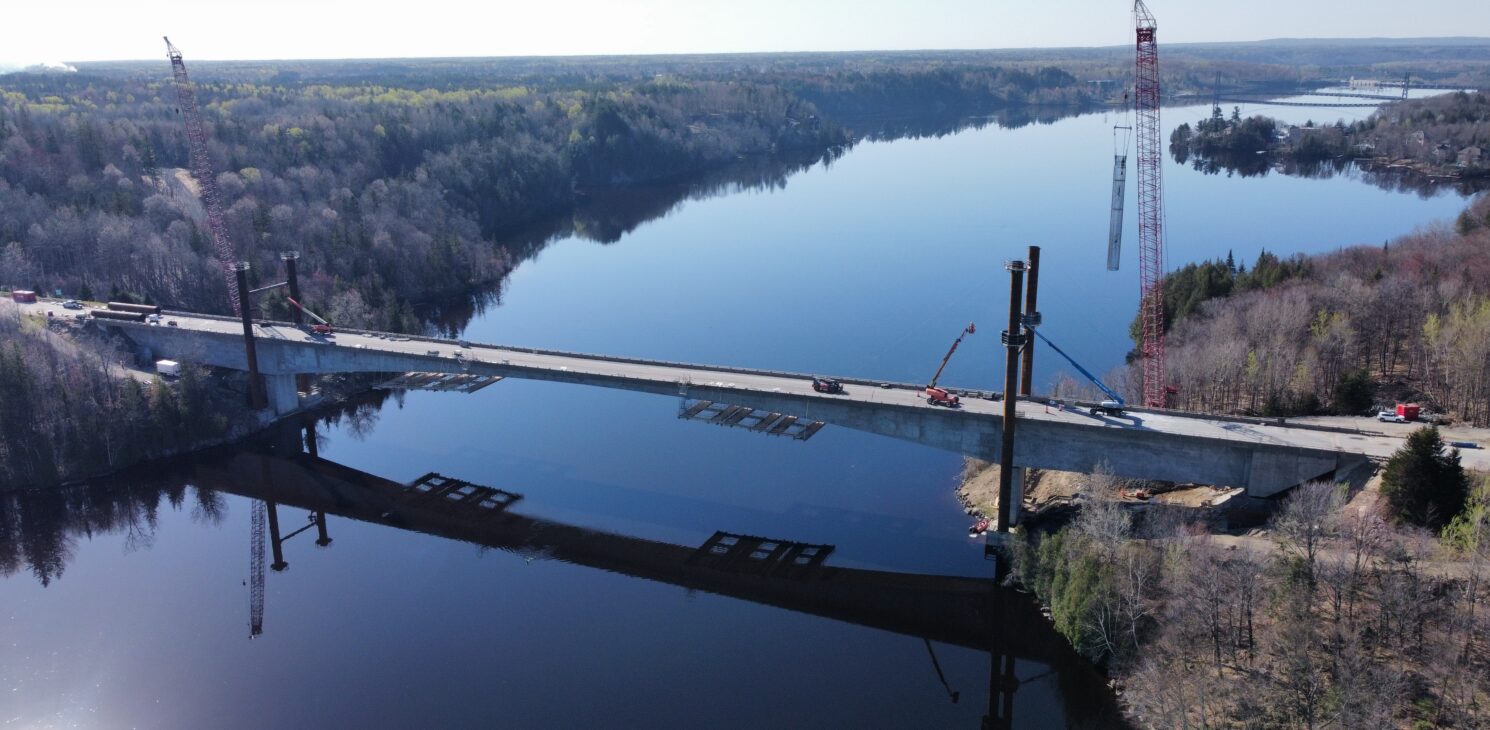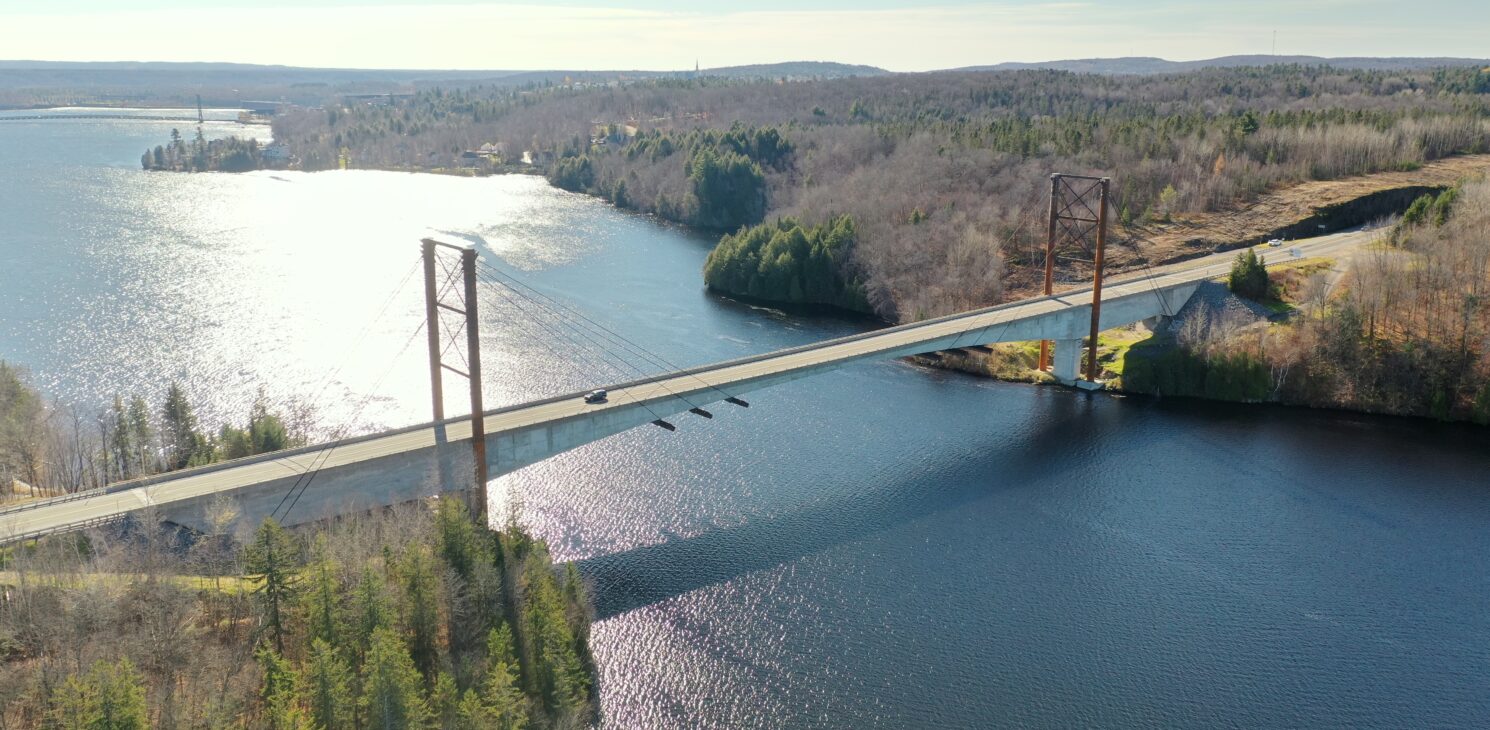The hasty closure of the pont des Piles set the tone. Clearly, reinforcing this major highway link in the Mauricie (Quebec) was an urgent project that would require innovative thinking from all concerned. CIMA+ met the challenge, committing to finding a way to consolidate the existing bridge before its replacement was built.
Every day, close to 12,000 vehicles cross the pont des Piles, located at the junction of autoroute 55 and route 155. Built in 1978, this crucial infrastructure is closely monitored by the Quebec transportation ministry, which has installed sensors over the years. In February 2022 came bad news: a preventive closure of the bridge was necessary, as the deck was deteriorating much more and faster than anticipated. Work on designing reinforcements that would boost the bridge’s load capacity began immediately.
“As on many bridges in Quebec, the deicing chemicals wound up doing their job and damaging the structure. In this case, since the slab is structural, corrosion causes a major weight-bearing capacity problem,” François Paradis, partner and senior project director at CIMA+, points out. The pont des Piles has a single prestressed, post-tensioned concrete box girder, built by balanced cantilever method. Also, the slab contains a considerable number of post-tension bars, which had deteriorated over time. It’s the longest structure of its kind—nearly 300 metres—in Quebec.
Paradis and his team were responsible for submitting a concept for reinforcing the structure of the pont des Piles. “We already had the mandate to build a new bridge downstream from the existing bridge,” the engineer notes. That detail is important. The safe demolition of such a long bridge with such substantial damage would mean reinforcing it first in any case. “We developed our reinforcement concept based on that reality. The mandate and the work were of high strategic importance,” he says.
An unusual concept
The chosen concept involved “transforming” the bridge into a cable-stayed bridge, that is, building pylons and cables designed to support the deck of the pont des Piles at various points. This was the only one of all the concepts that were evaluated that made it possible to simultaneously relieve the infrastructure and compensate for loss of capacity in the future—in other words, to ensure its current and future integrity. In addition, the concept meant that workers on the project would hardly ever need to venture onto the bridge. “Ninety-five per cent of the work was done near rather than on the structure, which was less risky,” says Paradis.
Two concrete-filled steel columns, built at each end of the structure, serve as pylons. The cables, composed of 21 to 42 strands about 200 mm in diameter, are attached to the top of the pylons on two opposite sides. The ends of the cables attached to one side of the steel columns facing the middle of the bridge are secured to the deck on the steel crossbeams. The ends of the other cables, which are also attached to the top of the beams, but on one surface of the steel structures facing the bank, are buried in the thrust blocks embedded in the rock foundation on each bank. The reinforced structure contains a total of 596 strands.
“This type of reinforcement is uncommon. As far as I know, we’re among the first in the world to do this,” Paradis says. The achievement is all the more remarkable given that the project was done using a design-build approach. “We were constantly adjusting the design based on feedback from our on-site partners and the availability and cost of the construction materials,” says Paradis, who headed a team of four engineers and two technicians.
The challenge has been met and the project was a great success. The pont des Piles reopened to vehicle traffic in late August 2022—less than seven months after the closing. Thanks to the impeccable work of the CIMA+ team, the project was completed before the original deadline—and not just by a little. “Although it was unsettling at times, this was a very interesting and stimulating professional challenge,” says Paradis, who is now working on the project to build the new pont des Piles, slated to begin this year.



